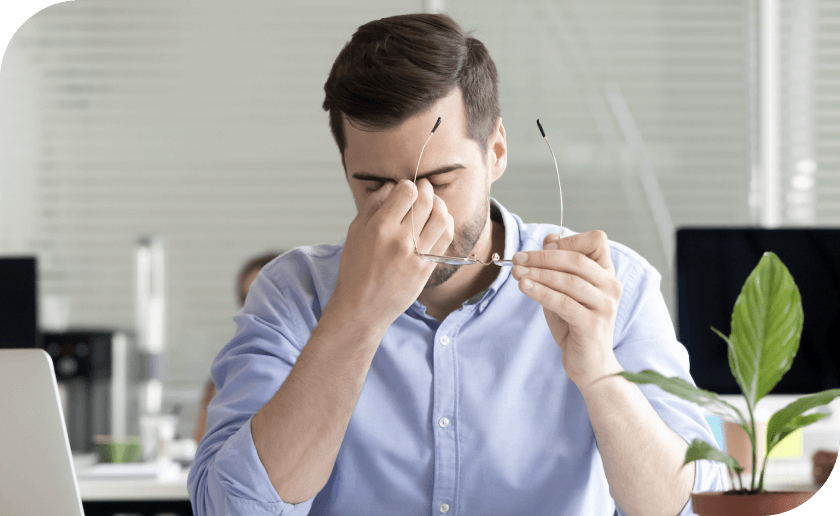Are your eyes feeling persistently irritated or dry? It could be dry eye syndrome. Understanding the causes and symptoms of this condition is the first step towards finding relief.
Dry eye syndrome is a common condition where your tears fail to provide enough lubrication for your eyes.
This can happen when your eyes don’t produce enough tears or when the tears are of poor quality. As a result, your tear film – the thin layer of liquid that covers the surface of your eye – becomes disrupted, leading to inflammation and potential damage to the surface of your eye.
Dry eye syndrome is not a one-size-fits-all condition. Depending on the underlying cause of the disruption to your tear film, it can present in various ways.
There are 3 main types:
Aqueous-deficient dry eye (ADDE) occurs when the glands that make the aqueous (water) layer of your tears (lacrimal glands) are damaged or not working properly.
It includes two subtypes: Sjögren’s ADDE, which is linked to the autoimmune condition Sjögren’s disease, and non-Sjögren’s ADDE, which is caused by other factors.
Also known as evaporative dry eye, this occurs when your meibomian glands, which produce the oily layer of your tear film, aren’t working properly.
The oily layer of your tear film helps seal in the liquid that coats your eyes and, consequently, when this layer is disrupted, your tear film evaporates too quickly.
This occurs when you have both aqueous and evaporative dry eye, and means that both the water and oily layers of your tear film are disrupted, leading to irritation and dryness.

Dry eye can be caused by a variety of factors that affect the production and quality of your tears, including aging, prolonged screen use and environmental conditions.
It can also be caused by certain medical conditions, including:
You may have dry eye if you notice any of the following symptoms:

Dry eye can be uncomfortable and frustrating, but the good news is that there are various treatment options available. One of our eye care professionals will help determine the best approach for your specific needs.
Some options we provide include:
If you’re struggling with dry eyes, contact us today to find the best treatment plan for you.
© All rights reserved. Website designed and developed by OptiCommerce.